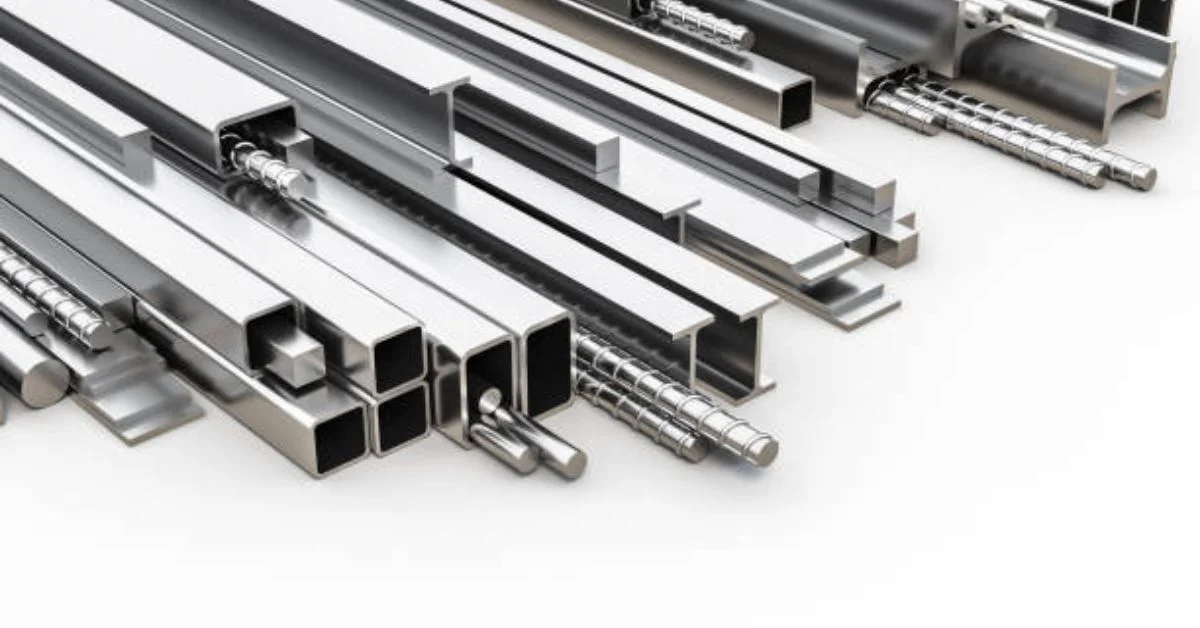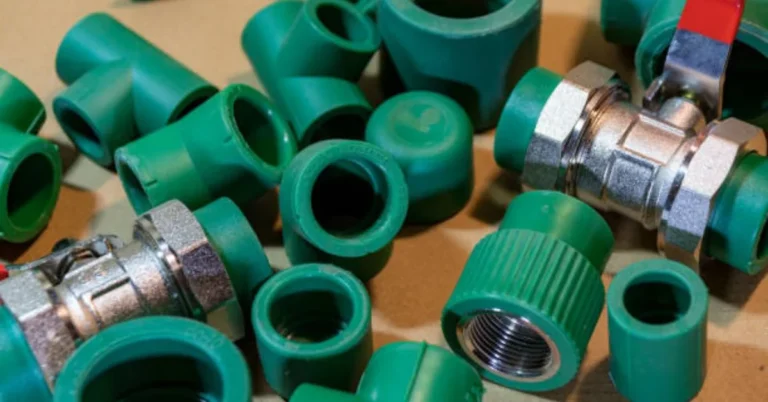
When we talk about modern materials that have reshaped industries, construction, household products, and even art, one of the most recognized and reliable options is material inox, also widely referred to as stainless steel. The word inox originates from the French “inoxydable,” meaning non-oxidizing. This directly points to its most celebrated feature: resistance to corrosion and rust.
Inox is not just a technical material confined to industrial plants; it is also a symbol of durability, cleanliness, and elegance. From kitchen utensils to massive architectural structures, from medical tools to aerospace components, material inox has become a cornerstone of durability and innovation.
In this comprehensive article, we will cover every angle of material inox including its history, composition, types, benefits, applications across industries, maintenance, comparisons with other metals, environmental role, and future prospects.
Origins and Development of Material Inox
The history of inox dates back to the early 20th century when metallurgists discovered that adding chromium to steel significantly increased its resistance to rusting. By 1913, Harry Brearley of Sheffield, England, developed the first stainless steel, which eventually led to the popularization of inox.
Since then, material inox has continuously evolved with different grades, alloys, and applications. Modern industries use it not only for functionality but also for aesthetic appeal, safety, and hygiene.
Chemical Composition of Material Inox
Material inox is essentially an iron-based alloy containing chromium (minimum 10.5%). The presence of chromium forms a thin, invisible passive layer of chromium oxide that prevents oxygen and water from penetrating the metal, thus stopping rust and corrosion.
Additional elements such as nickel, molybdenum, titanium, and manganese are added depending on the required grade and application.
Table: Common Elements in Inox and Their Roles
| Element | Percentage (Typical Range) | Function in Inox |
|---|---|---|
| Chromium | 10.5% – 30% | Provides corrosion resistance by forming protective oxide film |
| Nickel | 8% – 20% | Adds toughness, ductility, and resistance to acidic corrosion |
| Molybdenum | 2% – 6% | Increases resistance to chloride corrosion and pitting |
| Manganese | 1% – 2% | Improves hardness and workability |
| Carbon | 0.03% – 1% | Enhances strength but can reduce corrosion resistance at high levels |
Types of Material Inox
Material inox is not a single uniform product; it is classified into multiple categories based on microstructure and alloy composition.
- Austenitic Stainless Steel
- Contains high nickel and chromium.
- Excellent corrosion resistance, non-magnetic, high ductility.
- Common grades: 304, 316.
- Widely used in kitchen equipment, chemical plants, and medical devices.
- Ferritic Stainless Steel
- Higher chromium, little to no nickel.
- Magnetic, less ductile than austenitic.
- Suitable for automotive parts, decorative panels, and household appliances.
- Martensitic Stainless Steel
- High carbon content.
- Hard, strong, but less corrosion resistant.
- Used in cutlery, surgical instruments, turbine blades.
- Duplex Stainless Steel
- Combination of austenitic and ferritic structures.
- Excellent strength and corrosion resistance.
- Ideal for marine and oil & gas industries.
- Precipitation-Hardening Stainless Steel
- Strengthened by heat treatment.
- Extremely tough, with good corrosion resistance.
- Applied in aerospace and specialized engineering fields.
Properties of Material Inox
Material inox possesses a set of unique properties that make it superior in many situations compared to other metals.
- Corrosion Resistance: Protects against rust, oxidation, and chemical exposure.
- Strength and Durability: Maintains structural integrity even under stress.
- Hygienic Surface: Easy to clean, non-porous, ideal for food and medical applications.
- Aesthetic Appeal: Shiny, modern, and customizable surface finish.
- Recyclability: 100% recyclable, eco-friendly material.
- Temperature Resistance: Performs well in both high and low temperatures.
Applications of Material Inox
The widespread use of inox comes from its adaptability and reliability. It plays a critical role in several industries.
1. Household Applications
- Kitchen sinks, utensils, cookware, refrigerators.
- Furniture frames and modern home décor.
- Bathroom fittings like showers, faucets, and railings.
2. Construction and Architecture
- Building facades and roofing.
- Structural reinforcements.
- Decorative interiors, railings, escalators.
- Iconic landmarks such as bridges and skyscrapers often use inox for its durability.
3. Industrial Applications
- Chemical storage tanks and pipelines.
- Oil and gas industry components.
- Food and beverage production machinery.
- Pharmaceutical plants due to strict hygiene requirements.
4. Medical Field
- Surgical instruments.
- Orthopedic implants.
- Hospital furniture and sterile environments.
5. Transportation and Aerospace
- Aircraft components.
- Shipbuilding.
- Automotive exhaust systems.
- Train interiors and fittings.
Table: Applications of Inox by Industry
| Industry | Inox Applications |
|---|---|
| Household | Cookware, sinks, fittings |
| Construction | Facades, roofing, railings |
| Industrial | Storage tanks, pipelines, machinery |
| Medical | Surgical tools, implants, hospital equipment |
| Transportation | Automotive exhausts, aircraft parts, ship hulls |
Advantages of Material Inox
- Long-lasting and cost-effective due to reduced maintenance.
- Environmentally sustainable as it is recyclable.
- Provides safety in harsh environments.
- Resistant to extreme temperatures and pressure.
- Retains aesthetic appeal even after years of use.
Disadvantages of Material Inox
While inox is highly beneficial, it does have limitations:
- Higher initial cost compared to some metals.
- Certain grades can be difficult to weld.
- Susceptible to chloride corrosion in very salty environments without proper alloying.
Comparison: Material Inox vs Other Metals
| Property | Inox | Carbon Steel | Aluminum |
|---|---|---|---|
| Corrosion Resistance | Excellent | Poor | Good |
| Strength | Very High | High | Moderate |
| Weight | Heavier than aluminum | Moderate | Very Light |
| Cost | Higher | Lower | Moderate |
| Recyclability | Excellent | Good | Excellent |
Maintenance of Material Inox
Although inox resists rust, proper care extends its lifespan.
- Regular cleaning with mild soap and water.
- Avoiding strong chemicals like bleach.
- Polishing surfaces to retain shine.
- Using protective coatings in industrial environments.
Environmental Benefits of Material Inox
One of the most valuable aspects of inox is its eco-friendly nature.
- It is 100% recyclable without losing properties.
- Production uses less energy compared to other alloys.
- Its durability reduces the need for frequent replacements, cutting waste.
Future of Material Inox
With industries shifting toward sustainability and advanced engineering, inox will continue to grow in demand. Future applications may include:
- Renewable energy systems like solar and wind turbines.
- Advanced medical implants with improved biocompatibility.
- Smart architectural designs combining aesthetics with eco-efficiency.
- Electric vehicle components requiring both strength and corrosion resistance.
Conclusion
Material inox is much more than a strong, shiny alloy—it is a pillar of modern industry and everyday life. Its resistance to corrosion, strength, recyclability, hygiene, and elegance make it indispensable. From household kitchens to skyscrapers, from delicate surgical instruments to giant ships, inox stands as a symbol of durability, innovation, and sustainability.
Its future is even brighter as industries and societies continue to demand materials that are both technically superior and environmentally friendly. Truly, material inox is not just a product—it is a legacy of modern engineering and human progress.
FAQs
1. What is material inox?
Material inox, or stainless steel, is a corrosion-resistant iron alloy containing chromium and other elements like nickel and molybdenum.
2. Why is inox better than regular steel?
Inox resists rust, lasts longer, and maintains hygiene, while regular steel corrodes easily and requires frequent replacement.
3. What are common applications of material inox?
It is used in kitchens, architecture, medical instruments, industrial pipelines, transportation, and decorative designs.
4. Is material inox recyclable?
Yes, it is 100% recyclable and retains all properties even after multiple recycling processes, making it eco-friendly.
5. How do you maintain inox products?
Regular cleaning with mild soap, avoiding harsh chemicals, and occasional polishing keep inox products in excellent condition.
For more information, click here.





